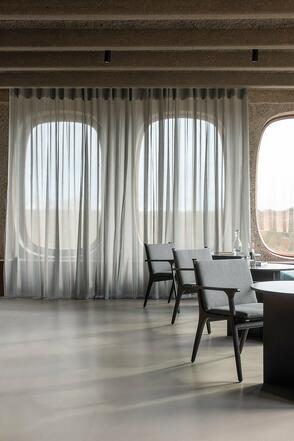Fire Retardant Fabrics: Your top 5 questions answered
11 October, 2019
For many design projects, particularly those in the commercial arena, Fire Retardant fabrics are imperative. With stringent safety standards to comply with and the need to reassure the end-user, Fire Retardant (FR) fabrics become the essential choice. But with so many different kinds of FR fabrics on the market, researching your options can be a bit of a minefield.
With this in mind, we answer the top five questions our clients ask us about Fire Retardant fabrics…
.png?rev=89675f55198143a4b15a1b292067a2a1&h=449&w=299&la=en&hash=C6E0DFDC630B549FF6A56DB4AB739891)

1. What are Fire Retardant fabrics?
A Fire Retardant (FR) fabric is one that has reduced flammability, either because of its naturally-occurring properties or because of a chemical treatment that has been applied to it. In the textile industry, a fabric is classed as Fire Retardant based on the temperature at which it ignites and the length of time it takes to burn. The resulting score assigned to the fabric allows you to make an informed choice about the type of fabric you wish to select for your project.
.jpg?rev=a64219d645774c7fac8e4d67ad862836&h=4912&w=7360&la=en&hash=103D1AC55F1E278AF801DF3847359FB2)
2. What are Fire Retardant fabrics made from and how are they classified?
There are essentially two types of FR fabrics. Those that are Inherently Fire Retardant because of naturally-occurring properties in the fibres, and those that are chemically treated to create FR properties. Inherently Fire Retardant (IFR) fabrics can be made from wool, silk or polyester. All FR-One fabrics are made from a 100% polyester yarn which is inherently Fire Retardant and is suitable for a wide variety of applications.
The textile industry classifies fabrics into six different types, depending on their flammabilit.
Proven comfort, every step of the way.
Fire Retardant (FR): Fabrics that are fire retardant or resistant through topical treatment, adhering to the NFPA 701 (National Fire Protection Association) guidelines.
Inherently Fire Retardant (IFR): Fabrics that are Fire Retardant without requiring any additional chemical treatment. These fabrics uphold the NFPA 701 standard.
Non-Fire Retardant (NFR): Fabrics that are not in any way fire-resistant or Fire Retardant.
Durably Fire Retardant (DFR):Synthetic fabrics that are considered flame retardant for a lifetime. Washing or cleaning these fabrics does not affect their fire resistance.
Can Be Made Fire Retardant (CBFR):Fabrics that can be treated to become flame retardant.
Cannot Be Made Fire Retardant (CNFR):Fabrics that cannot be processed or treated to become fire resistant. Not suitable for use in public spaces.

3. Can FR fabrics be used for purposes other than curtains and upholstery?
TAbsolutely! Fire Retardant fabrics can be just as versatile as any other type of fabric. As well as using them for conventional purposes such as curtains and upholstery, they can be used to make lampshades or ceiling canopies.


4. Are Fire Retardant fabrics environmentally-friendly?
Oeko-Tex is an environmental certification system addressing the entire textile production process. For a product to be awarded Oeko-Tex’s ‘Standard 100’ certificate, it must undergo rigorous testing ensuring its production process is safe both for the environment and for the people who come into contact with the product. Choosing an Oeko-Tex certified fabric means peace of mind for both you and your end-user.
At FR-One, we go one step further. As well as meeting Oeko-Tex's exacting standards, our 100% polyester yarns also require less water during washing because of their low absorption properties. They also save energy during the drying process thanks to a higher than average dehydration speed.



